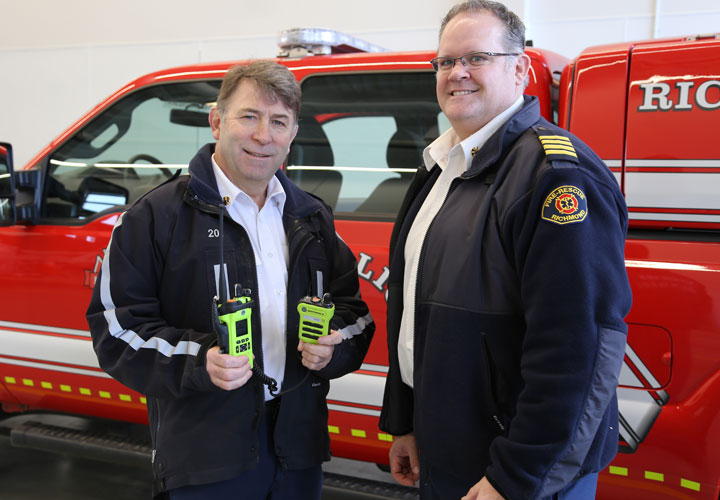New equipment and radio network
New equipment and radio network help fight crime and keep the public safe


The Vancouver Police Department (VPD) credits the new E-Comm Wide-Area Radio Network with helping to nab a man who allegedly drove across the border into Canada from the United States without stopping.
At 8:20 a.m. on September 15, Surrey RCMP notified Vancouver police that a man driving a blue pick-up truck with Oregon licence plates had driven through the border minutes before, without stopping and was speeding towards Vancouver. VPD officers located the truck a short time later on the west side of the city. They attempted to pull the vehicle over using lights and sirens, but the driver refused to stop, so officers pursued. The truck collided with another vehicle and then police arrested the suspect. The suspect from Oregon has been charged with dangerous operation of a motor vehicle and flight from a peace officer.
“The radio equipment used by first responders across the Lower Mainland allows them to talk to each other during emergencies,” said VPD Constable Jason Doucette. “Efficient communication between agencies led to the swift arrest of this man who made unauthorized entry into Canada.”
Earlier this year, E-Comm and its partners completed the planned replacement of the Wide-Area Radio Network. More than 30 police, fire and ambulance agencies from Lions Bay to Abbotsford communicate on the network.
As part of the project, E-Comm deployed approximately 8,000 new or upgraded radios. Interoperability between all emergency service agencies means a safer working environment for first responders as police officers can communicate with firefighters or paramedics on the same, secure digital radio channel.
Below are some recent examples of how agencies are using the new equipment and the interoperability features of the new radio system to respond to emergencies and enhance public safety.
Richmond Fire-Rescue used its new dual-band radios to communicate with provincial wildfire crews during a very stubborn fire in the city’s nature park in July. With shared talkgroups, city firefighters could communicate directly with B.C. Wildfire Service’s aircraft to help extinguish the blaze.
In August, firefighters with Surrey Fire Service were able to communicate directly with their counterparts at Langley City Fire Rescue Service to battle a large commercial structure fire on the border between the two cities. With separate tactical talkgroups patched together, unified communications helped crews deal with this incident. Langley City Fire Rescue Service joined the E-Comm Wide-Area Radio Network on April 17.
Interoperability isn’t just for emergency response. It can also help organize safety services for big public events. Coquitlam RCMP was also able to use, for the first time, a Police-Fire-Ambulance command talkgroup with Port Coquitlam Fire & Emergency Services during the PoCo Grand Prix cycling races in July. They shared a command centre and pre-planned the communications, which improved the management of calls during the event. Port Coquitlam Fire & Emergency Services also recently joined the radio system (February 2018) giving this communications power to the city for the first time.
The E-Comm Wide-Area Radio Network is the largest multi-jurisdictional tri-service emergency radio system in B.C.

